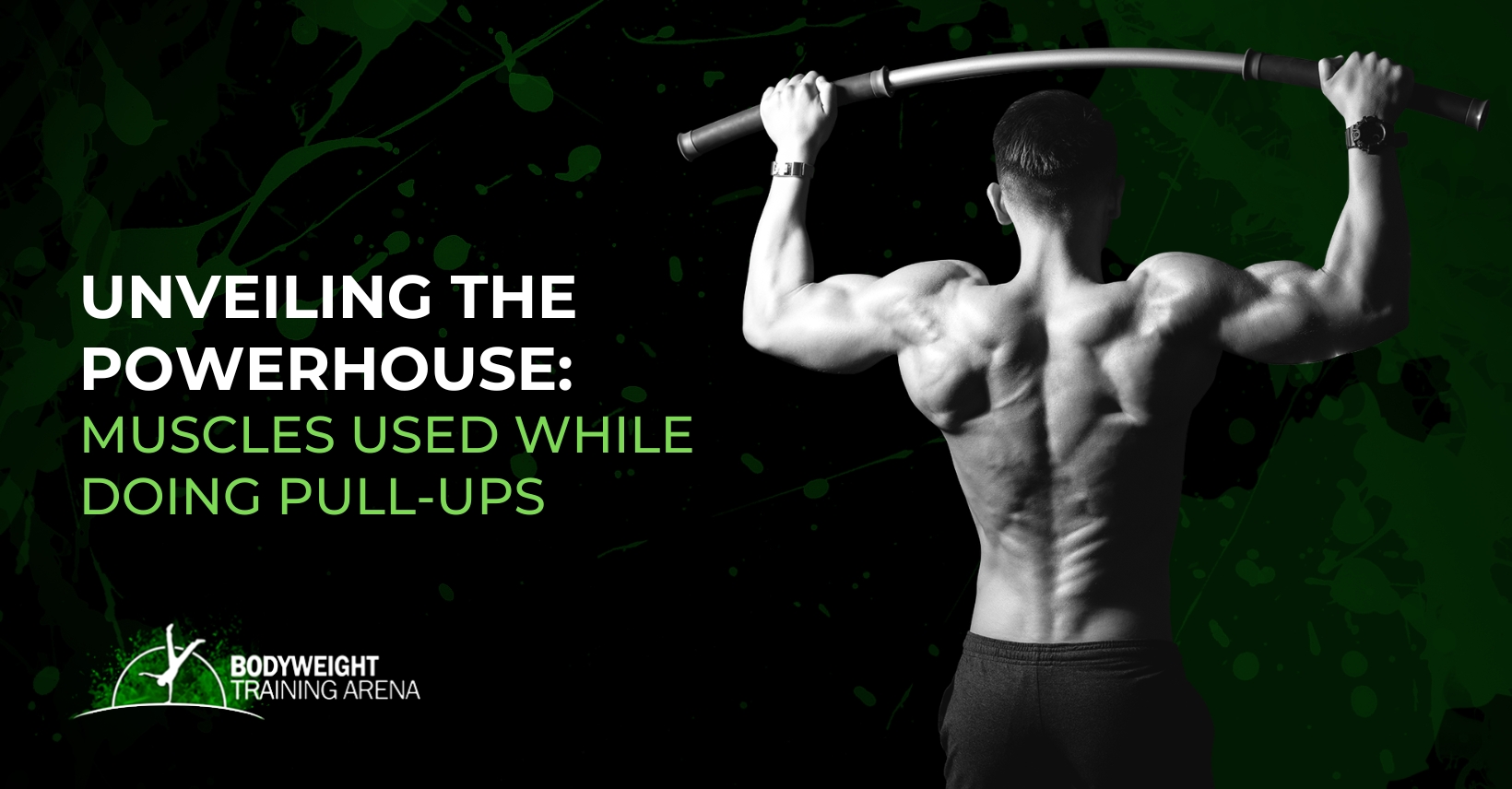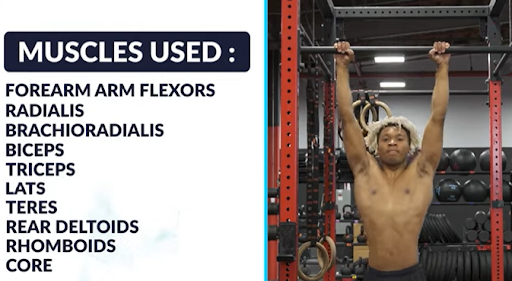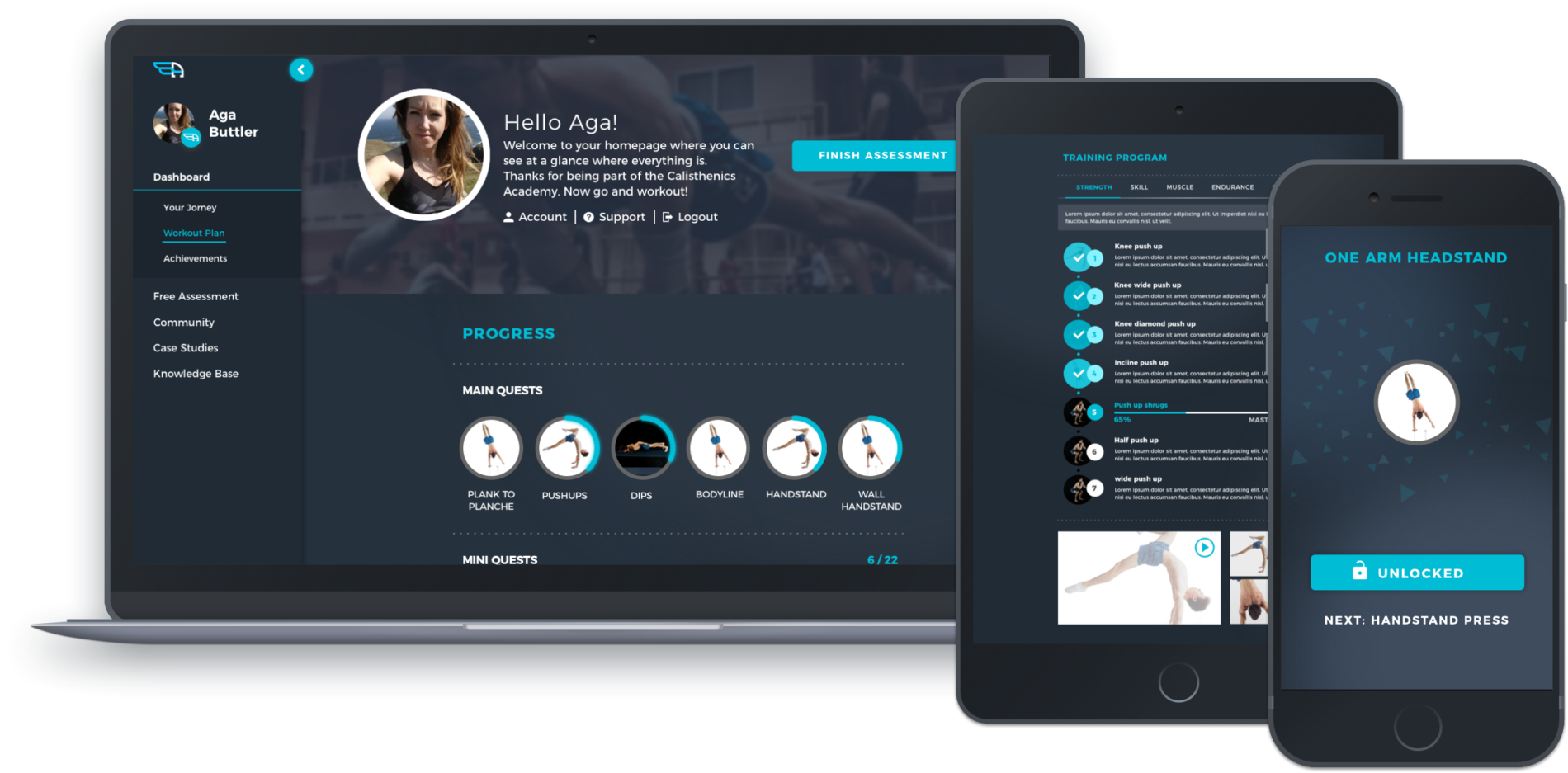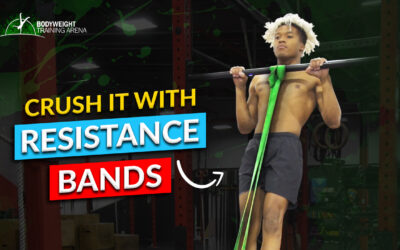🤯Have you ever wondered how a seemingly simple movement can profoundly impact your upper body strength and overall fitness journey?
Imagine this: You’re standing in front of a sturdy overhead bar, ready to embark on a challenge that will test your physical prowess and sculpt your muscles in remarkable ways.
Yes, we’re talking about pull-ups, the classic exercise that transforms your body weight into a tool for building a stronger you.
💯It’s not just your biceps and back at play; it’s a collaboration that combines various muscle groups for symmetrical upper body strength.
In this article, we’ll delve into the muscles that unite their forces to conquer pull-ups and unravel each muscle’s unique role.
💪Muscles Engaged In Pull-ups
🔥Forearm Muscles:
Your forearm muscles, including the flexors and extensors, engage to support your grip on the pull-up bar. A strong grip is essential for maintaining your hold throughout the movement.
As you progress in your pull-up training, your forearm muscles adapt and grow stronger, contributing to overall grip strength and endurance.
🔥Radialis
The radialis plays a supporting role in pull-ups by assisting in elbow flexion during the initial phase of the movement, working alongside the larger muscles like the biceps and brachialis.
Additionally, it aids in maintaining forearm and wrist stability, contributing to proper joint alignment throughout the exercise. While not the primary mover, the brachioradialis is essential for initiating the pull-up and ensuring smooth mechanics.
🔥Brachialis and Brachioradialis
While the biceps take on a significant role, the brachialis and brachioradialis muscles, located on the sides of your upper arm, also contribute to the flexion of your elbows during a pull-up. Strengthening these muscles enhances forearm and elbow stability, which can be particularly beneficial for grip strength.
🔥Biceps Brachii
The biceps in the front of your upper arm are heavily involved in the pull-up motion. As you pull yourself up, your biceps contract to flex your elbows, contributing to the pulling force. This engagement helps develop the “peak” of the bicep muscle and defines your arms.
🔥Triceps
Our triceps act as stabilizers, providing support and balance during the upward phase.
They keep your arms steady and prevent them from flaring out, ensuring your body moves efficiently and effectively. This stabilizing function helps you maintain control and minimizes unnecessary strain on your shoulders and wrists.
🔥Latissimus Dorsi (Lats)
The lats, often called the “wings,” are the primary movers in the pull-up exercise. They are large, flat muscles that stretch from the upper arm to the lower back. As you initiate the pull-up, your lats contract to pull your body upward, driving the movement. Developing strong lats not only enhances the V-shape appearance of your back but also significantly contributes to overall upper body strength.
🔥Teres
Essential players in the grand performance of pull-ups. Picture yourself gripping that overhead bar, ready to conquer the challenge ahead. As you initiate the pull, your major and minor muscles come into play, supporting your upper body’s movement. Think of your teres muscles as your stabilizers and guides.
🔥Deltoids (Shoulders)
The deltoid muscles are engaged but still contribute to the overall movement. As you pull your body up, the deltoids, particularly the lateral and posterior portions, assist in raising your arms to the level of your shoulders. This engagement adds to the comprehensive upper body workout that pull-ups provide.
🔥Rhomboids and Trapezius
The rhomboids and trapezius muscles, situated between the shoulder blades and upper back, play a crucial role in stabilizing your shoulder girdle during the pull-up. These muscles help maintain proper shoulder alignment and prevent excessive stress on the shoulder joints. A strong and balanced upper back is essential for injury prevention and optimal posture.
🔥Core Muscles
Though not the primary focus, your core muscles play a stabilizing role during pull-ups. They help maintain a straight body alignment, preventing excessive swinging or arching of the back. Engaging your core also improves control and form, making the exercise more effective.
Related articles:
📍Achieve Rapid Progress: A Step-by-Step Guide to Perfect Pull-Ups for Beginners at Home
📍Straight bar pull-ups vs Gymnastics ring pull-ups: Which Is the Better?
🎯Significance of Engaging Muscles During Pull-Ups
When incorporated into your routine, these muscles provide a foundation for strength, functionality, and overall fitness. The muscles engaged in pull-ups play a pivotal role in various aspects of fitness:
- 👊Upper Body Strength: Pull-ups require muscles like the lats, rhomboids, trapezius, and biceps to lift your body weight, enhancing upper body strength.
- 👊Efficient Workouts: Pull-ups are compound exercises that efficiently engage multiple muscles for holistic development.
- 👊Functional Fitness: These muscles are vital for daily tasks like lifting and climbing, enhancing functional fitness.
- 👊Posture and Injury Prevention: Pull-ups strengthen upper back muscles, improving posture and reducing injury risks.
- 👊Progression and Confidence: Strengthened muscles allow for advanced variations, boosting confidence and achievement.
⚡️Rest and Recovery After Pull-Ups
Rest is just as crucial after performing pull-ups as the exercise itself. 📍Pull-ups are demanding on the upper body’s muscles, particularly the back, shoulders, and arms. Giving your 📍muscles time to recover allows them to repair and grow stronger.
Resting helps prevent overuse injuries, muscle strains, and fatigue. During rest, your body rebuilds torn muscle fibers and replenishes energy stores.
Adequate sleep and nutrition also play a role in this recovery process. So, include rest days in your workout routine to ensure optimal gains and overall well-being.
🧐Frequently Asked Questions:
🔎Do pull-ups work the shoulders?
Yes, pull-ups engage the deltoid muscles in the shoulders, particularly the lateral and posterior portions, assisting in raising your arms during the movement.
🔎Are pull-ups effective for building arm strength?
Pull-ups are effective for building arm strength. The biceps brachii, brachialis, and brachioradialis muscles flex the elbows during the pull-up, contributing to increased arm strength.
🔎What is the role of the core during pull-ups?
The core muscles play a stabilizing role during pull-ups. They help maintain proper body alignment, preventing excessive swinging and arching of the back, thus promoting better form and control.
🔎Can pull-ups help improve grip strength?
Yes, pull-ups are beneficial for grip strength. The forearm muscles, including the grip-strengthening flexors and extensors, engage to support your hold on the pull-up bar, leading to improved grip strength over time.
Conclusion
Pull-ups are a compound exercise that engages a multitude of muscles in your upper body, making them an excellent choice for building strength, size, and functional fitness.
Incorporating pull-ups into your workout routine targets various muscle groups simultaneously, offering a comprehensive upper-body workout.
Whether your goal is to increase muscle mass, enhance strength, or improve overall fitness, pull-ups provide an effective and challenging avenue to achieve those goals.
Remember, consistency, proper form, and progressive overload are key to maximizing the benefits of this classic exercise.
The Movement Athlete offers a personalized program that adapts to your fitness goals. Build real-life strength, bullet-proof joints, and a gymnast-like body with adaptive calisthenics.






0 Comments